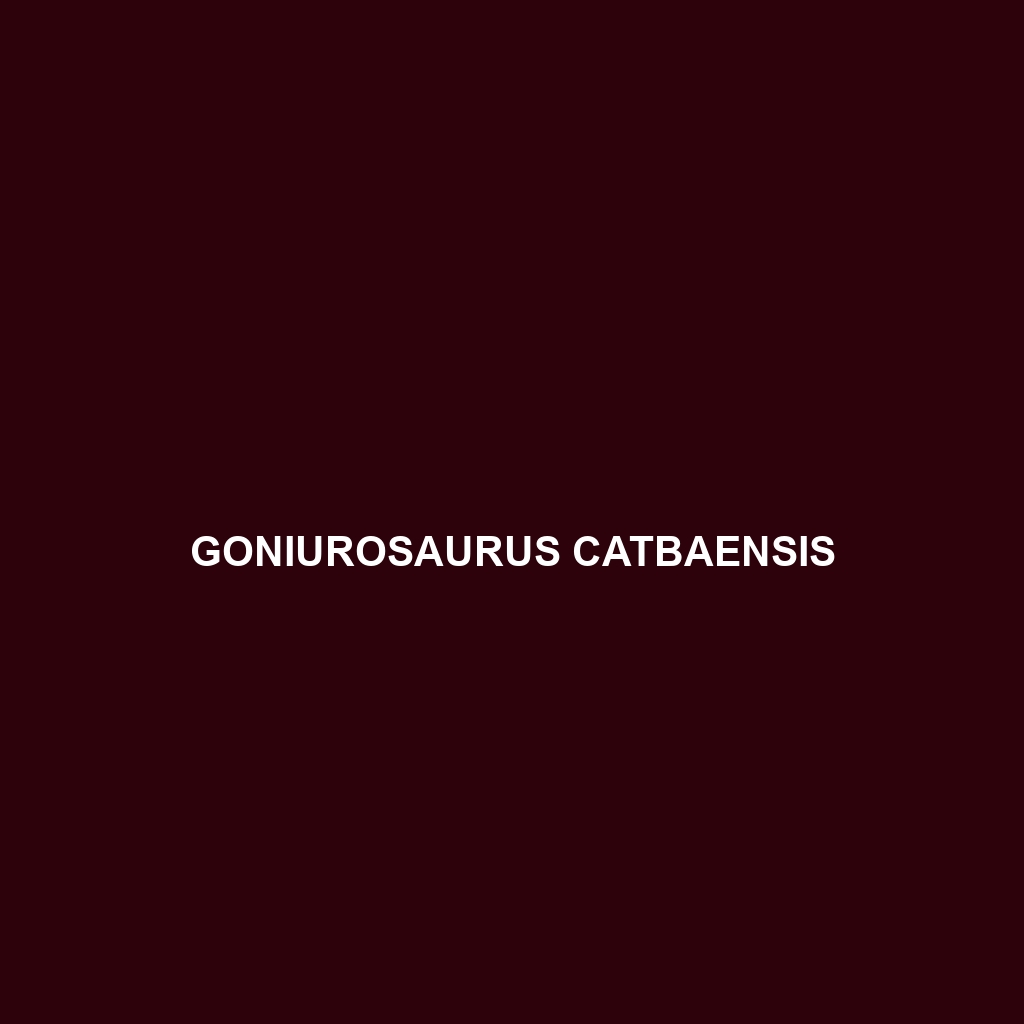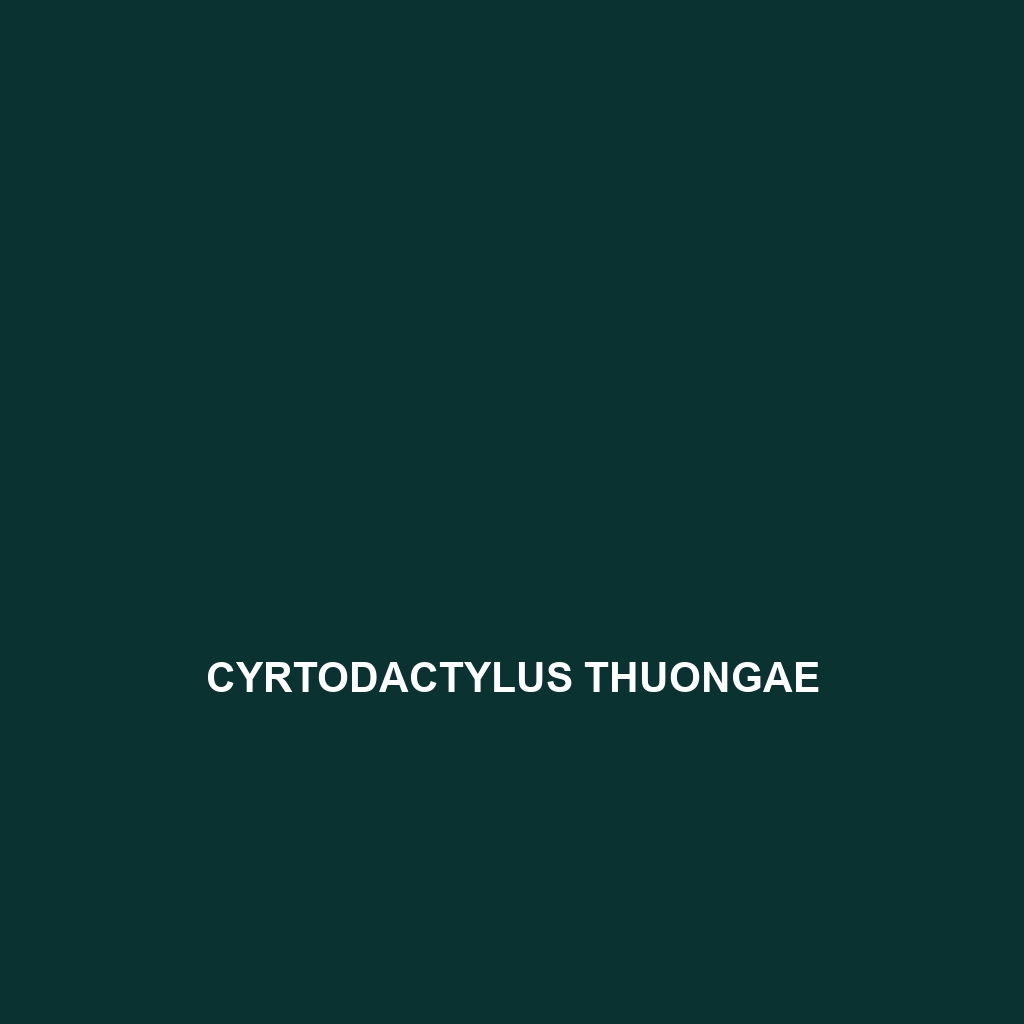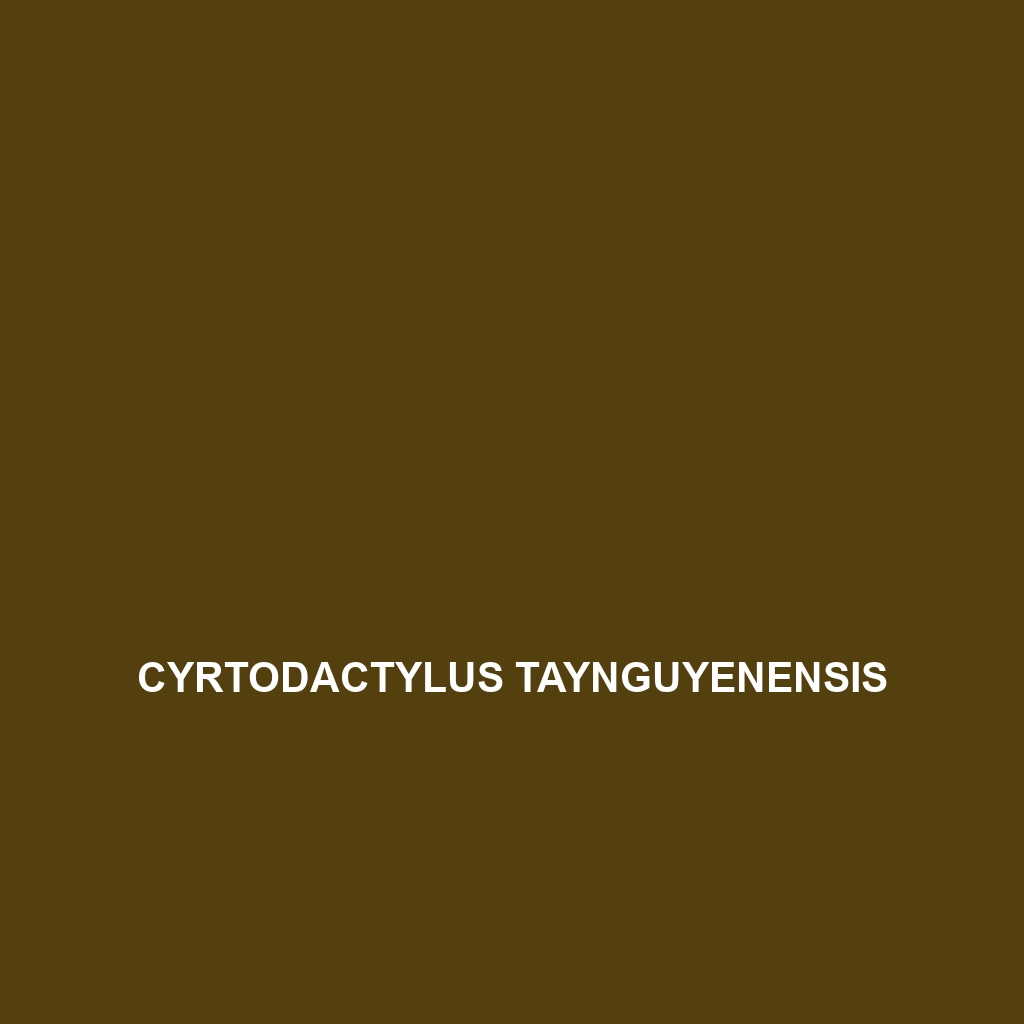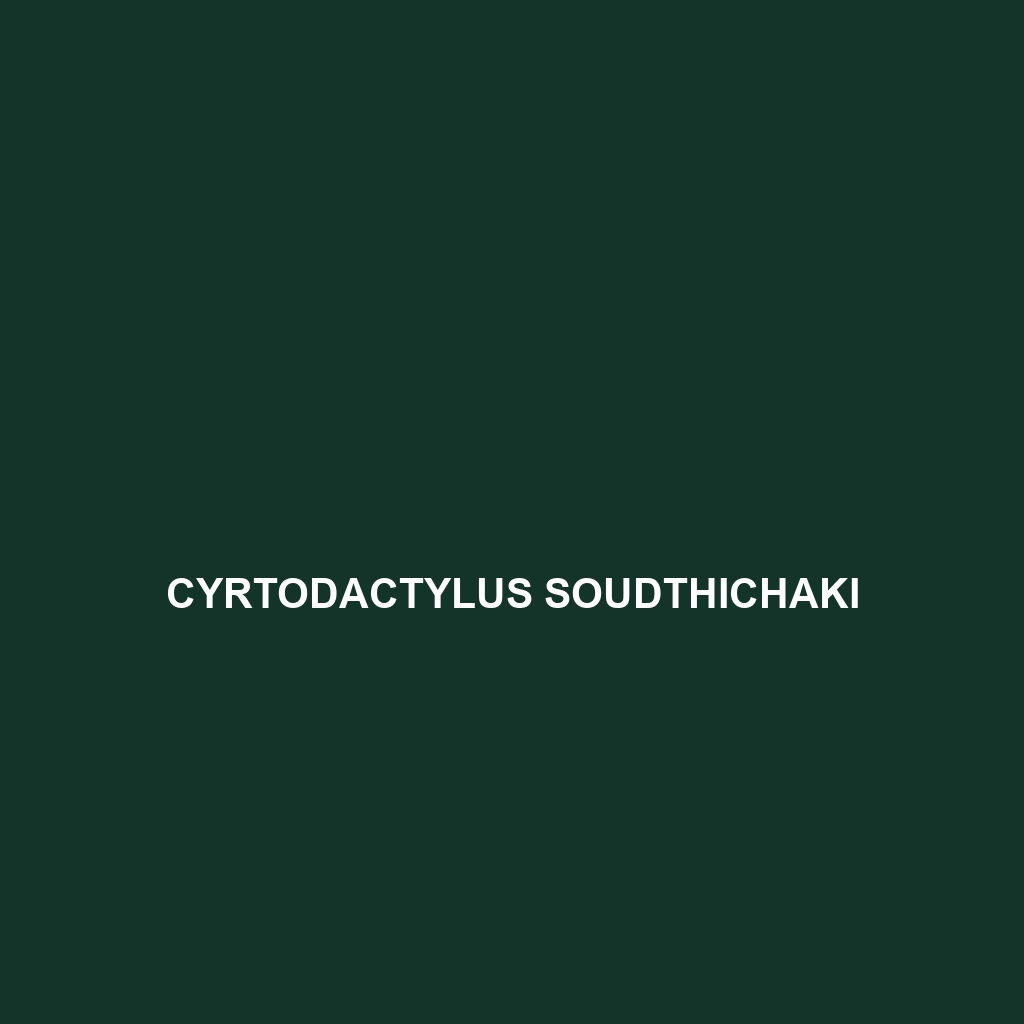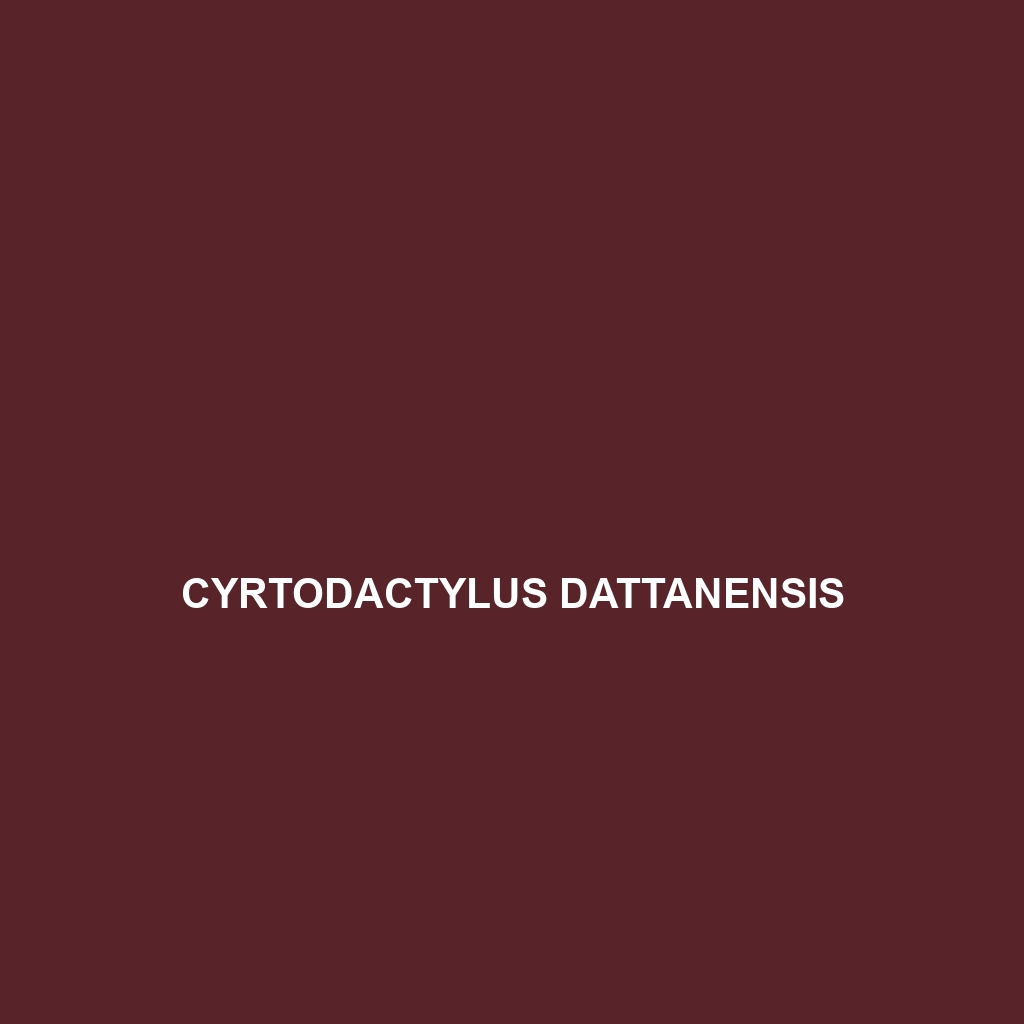<p><b>Goniurosaurus catbaensis</b>, or the Cat Ba stripped gecko, is a vibrant, nocturnal reptile found in the rainforests of Cat Ba Island, Vietnam. With a length of 20-25 cm, this species exhibits striking patterns and plays a crucial role in controlling insect populations within its rich ecosystem.</p>
Tag: Vietnamese gecko species
Cyrtodactylus thuongae
Cyrtodactylus thuongae, or Thuong's bent-toed gecko, a slender, nocturnal species found in central Vietnam's tropical forests. With remarkable climbing abilities, intricate patterns for camouflage, and a diet primarily of insects, this vulnerable gecko plays a vital role in its ecosystem.
Cyrtodactylus taynguyenensis
The Cyrtodactylus taynguyenensis, a Vulnerable species found in the humid tropical forests of Vietnam's Central Highlands, measures 7-10 inches in length and features light brown and gray coloration with darker blotches for camouflage. Nocturnal and agile, this gecko primarily feeds on insects and plays a crucial role in its ecosystem by helping control insect populations.
Cyrtodactylus sonlaensis
Cyrtodactylus sonlaensis, a vibrant gecko from Vietnam's limestone karsts, known for its agile movements and insectivorous diet. This vulnerable species thrives in humid tropical forests and showcases remarkable adaptations such as tail regeneration, playing a crucial role in its ecosystem.
Cyrtodactylus hangvaensis
The <strong>Cyrtodactylus hangvaensis</strong>, or Hangva bent-toed gecko, is a nocturnal species from the tropical forests of Southeast Asia, measuring 10 to 15 cm with a slender body and toe pads for climbing. Primarily insectivorous, this vulnerable gecko plays a vital role in its ecosystem while facing threats from habitat loss.
Cyrtodactylus dattanensis
Cyrtodactylus dattanensis is a medium-sized gecko native to the tropical forests of Vietnam, known for its slender body, distinctive banding patterns, and unique camouflage abilities. This nocturnal species plays a vital role in regulating insect populations, making it crucial to its forest ecosystem.</p>
